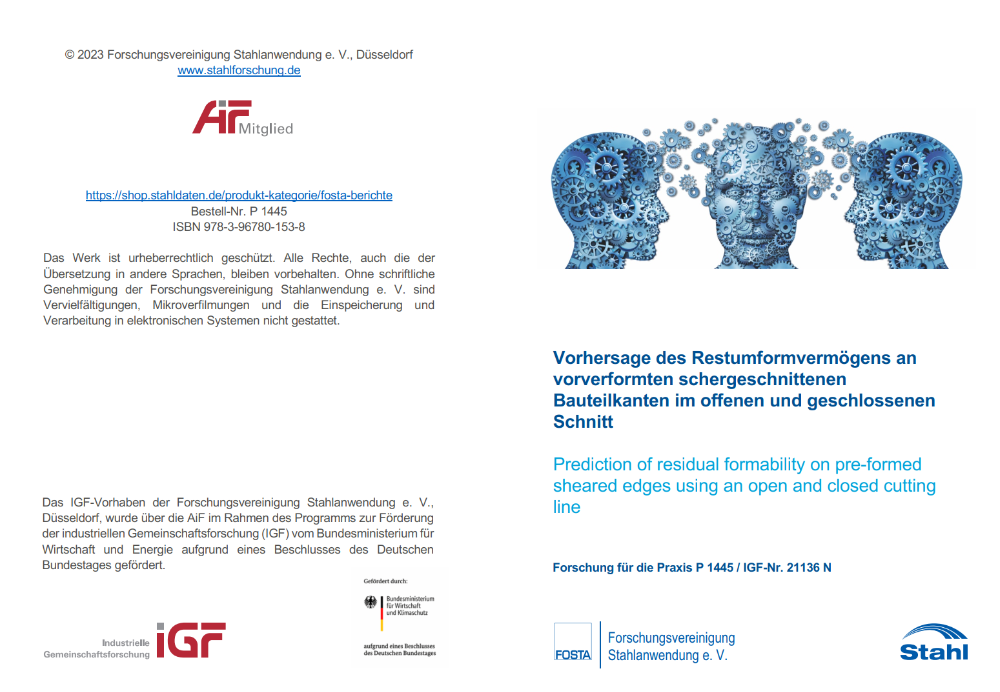Description
P 1445 – Prediction of residual formability on pre-formed sheared edges using an open and closed cutting line
The use of the manufacturing process of shear cutting can lead to a reduced residual formability of the shear cut edges. If a shear cut edge is subsequently formed, this can result in premature material failure, starting from the component edge. This problem occurs in particular when processing high-strength and ultrahigh-strength sheet materials such as dual-phase steels. In practice, the production of complex components is often performed as a sequence of several deep-drawing, trimming, postforming or collar-drawing operations. However, the influence of a previous sheet metal forming operation on the edge crack sensitivity is only insufficiently described in the literature and sometimes contradictory.
In this work, the influence of a sheet metal pre-forming on the edge crack sensitivity for different shear cutting strategies is investigated using three different dual-phase steels. For this purpose, samples are taken from homogeneously pre-formed sheets with different pre-forming types and amounts and the edge crack sensitivity is determined using the Edge-Fracture-Tensile-Test (EFTT).
The experimental results show that sheet pre-forming results in a reduction of edge crack sensitivity for all sheet materials and initial edge crack sensitive shear cutting strategies. The necessary pre-forming to completely eliminate edge crack sensitivity is a material paramete and thus independent of the cutting strategy or initial edge crack sensitivity without pre-strain. Based on microhardness measurements in the area of the cut edge, a relationship can be established between the hardening ratio of the area near the edge compared to the base material and the edge crack sensitivity.
By considering a pre-strain dependent edge crack sensitivity in the component design in the FEM simulation, an extension of the process window can be achieved. In contrast, focusing only to one edge crack sensitivity factor in the simulation, which is independent of the pre-strain, would result in an underestimation of the formability of the edges.
All research reports in german language only!
Published in:
October 2022
Authors:
A. Kindsmüller, M.Sc., Prof. Dr.-Ing. W. Volk


